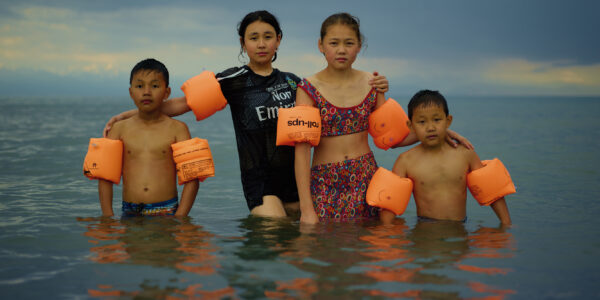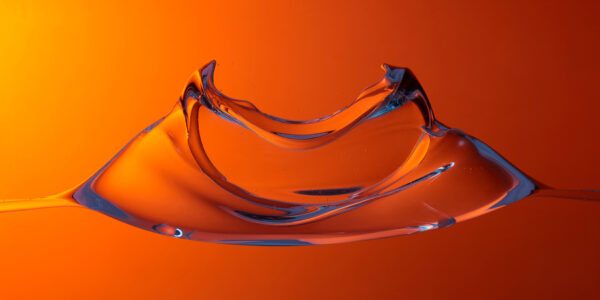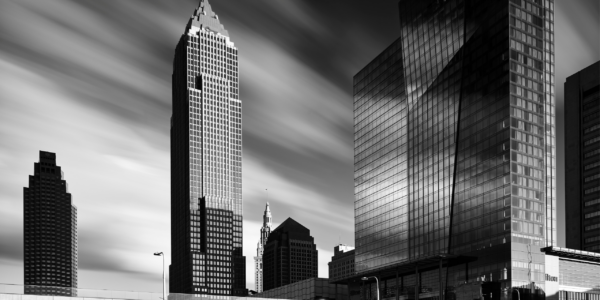The sensor in the IQ3 100MP Trichromatic is our highest achievement in color technology. It has taken the rendering of natural colors to a level never before seen. The technical details from the 16-bit file, superior color render at a hardware level, abilities to capture the subtle and dynamic variation of the tiniest slivers of colors are just some of the headlines this technology has achieved; but the proof of its capabilities is, of course, in the photography.
What we talk about when we talk about color
We spent some time with the professional photographer, Andrea Zvadova, who specializes in portrait, fashion and beauty photography. Photographing human skin is one of the most nuanced and difficult-to-perfect color surfaces, given the human eye’s ability to see and interpret details on a primal level, far beyond what we consciously process.
The need for perfection in capturing human skin, therefore, is one of the reasons Phase One focused on achieving a color fidelity color capture at sensor level than any other camera available. Taking the technology to a photographer is how we tested the Trichromatic in the real world focusing on capturing accurate skin color.
As a photographer, what are the challenges of capturing skin color?
“To an untrained eye it could seem skin has just one solid color. We know it’s not that way. The same way painters add surprising colors of blues, greens, purples, reds, yellows into their paintings of portraits and skin, we can see in less exaggerated perspective that skin has naturally all these color tones.”
“Skin has so many colors and details that are very interesting and can be hard to capture. I think the light is a key element to capture skin correctly and the camera has its role as well.”
“I am fascinated by the details of the human form, going into microcosmos of these details brings me to a completely different place. Suddenly you have another landscape in front of you. You can focus on what’s within the frame, sometimes the skin can remind you of sand dunes or details of eyelashes of a weird flora or insect world.”
What was your impression of the Trichromatic capturing these details?
“The Trichromatic’s ability to capture the fine details of skin is amazing, the detail you get with 101-megapixels is just incredible.”
“I didn’t need to change anything, all the images I see straight from the camera was great and I was happy with all the tones.”
“I felt like I was in a different world when I was looking at the skin patterns and all the fine hair or eyelashes and brows. I could see the difference straight away, the color scale is very impressive. There are subtle differences in the skin that can be explored, and the Trichromatic was able to capture this.”
Looking at the images up close (100% zoom), what was your feeling about the detail and color rendering?
“It was very crisp and sharp. Some images have a slightly shallower depth of field, so where the image is perfectly sharp, the details are really clear and vibrant, the skin looks incredibly real and alive. You don’t usually see these details even on yourself when you go close enough.”
Did the Trichromatic make any difference to your workflow?
“It made my process simpler, I was happy with all the colors and didn’t need to adjust anything in terms of color. Shooting with the Trichromatic was really smooth, I have worked with IQ3 100MP previously and Trichromatic version is very straightforward. I concentrated on photographing images with good lighting and making sure I’ve got focus right, otherwise it made it very simple regarding color tones, no need to play with any adjustments to make it look the way it should. I was really pleased with the ISO 35 option. Obviously, I couldn’t resist and used it on all the imagery I photographed. When you scale up the image in a large size, this makes a real difference.”
Analyzing the images
The XF IQ3 100MP Trichromatic is the only camera sensor that is able to capture extreme variation in tint, tone, and shade within a narrow hue range at a sensor level. It is the Trichromatic sensor itself that captures this subtle and dynamic color from one pixel to the next, rather than something created in post-production. This is what makes the Trichromatic so unique. Through Andrea’s beautiful skin pictures, we will explore exactly this extreme detail and hue variations that she was able to capture.
Extreme variation in tint, tone, and shade
In this image below of a hand lightly resting over the bare skin of the stomach, there is flat lighting with little to no contrast, except for the details found in the wrinkles of the finger joints. It has almost no variation in hue, rather it is almost one single slice of a specific hue range (see Color Wheel).
The subtle hue transitions are what makes this image so special. Without a depth of color, the image in itself is quite plain, however, what makes this image so engrossing is the extreme variation in the tint, the tone, and the shade.
Seeing every freckle
The extreme detail in this image shows the tiniest creases in the lips and a smooth elegance in tonal transition from lip to skin. The true renders of the complex color in the hue variations from lips to cheek to freckles are caught thanks to the heightened sensitivity of the Trichromatic. Even with a limited color palette, the complexity within the range is evident. The result is a clean and smooth tone without being flat
Huge dynamic color
In this image, we can see there is a captivating depth to be explored. The colors range from red to deep rich brown/black with a subtlety of tone transition around the nose, lips, and chin. There are no ‘flat’ areas in the tone transitions, which adds to the sense of depth in this image. Additionally, the details in the lips, from the tiny creases to the micro-highlights, give a strong textural and three-dimensional sense to the image.

Photographer Stories
Intimacy in focus: Louise’s lens on humanity with Phase One_Part1

Photographer Stories
Dimitri Newman: Vision is Just the Start

Photographer Stories
Ashes: The Rebirth of a Camera- Hexmalo

Photographer Stories
Chandler Williams: A Photographer’s Path

Photographer Stories
TABO- Gods of Light

Photographer Stories
Loreto Villarreal – An Evolving Vision

Photographer Stories
Tobias Meier – Storytelling Photography

Photographer Stories
Gregory Essayan – Curating Reality

Photographer Stories
Total Solar Eclipse – Matthew C. Ng

Photographer Stories
Roger Mastroianni – Frame Averaging

Photographer Stories
Matthew Plexman – Bringing portraits to life

Photographer Stories
Prakash Patel – A Visual Design Story

Photographer Stories
Karen Culp – Food Photography Ideas

Photographer Stories
T.M. Glass: Flower portraits

Photographer Stories
Preserving ancient Chinese buildings – Dong Village
